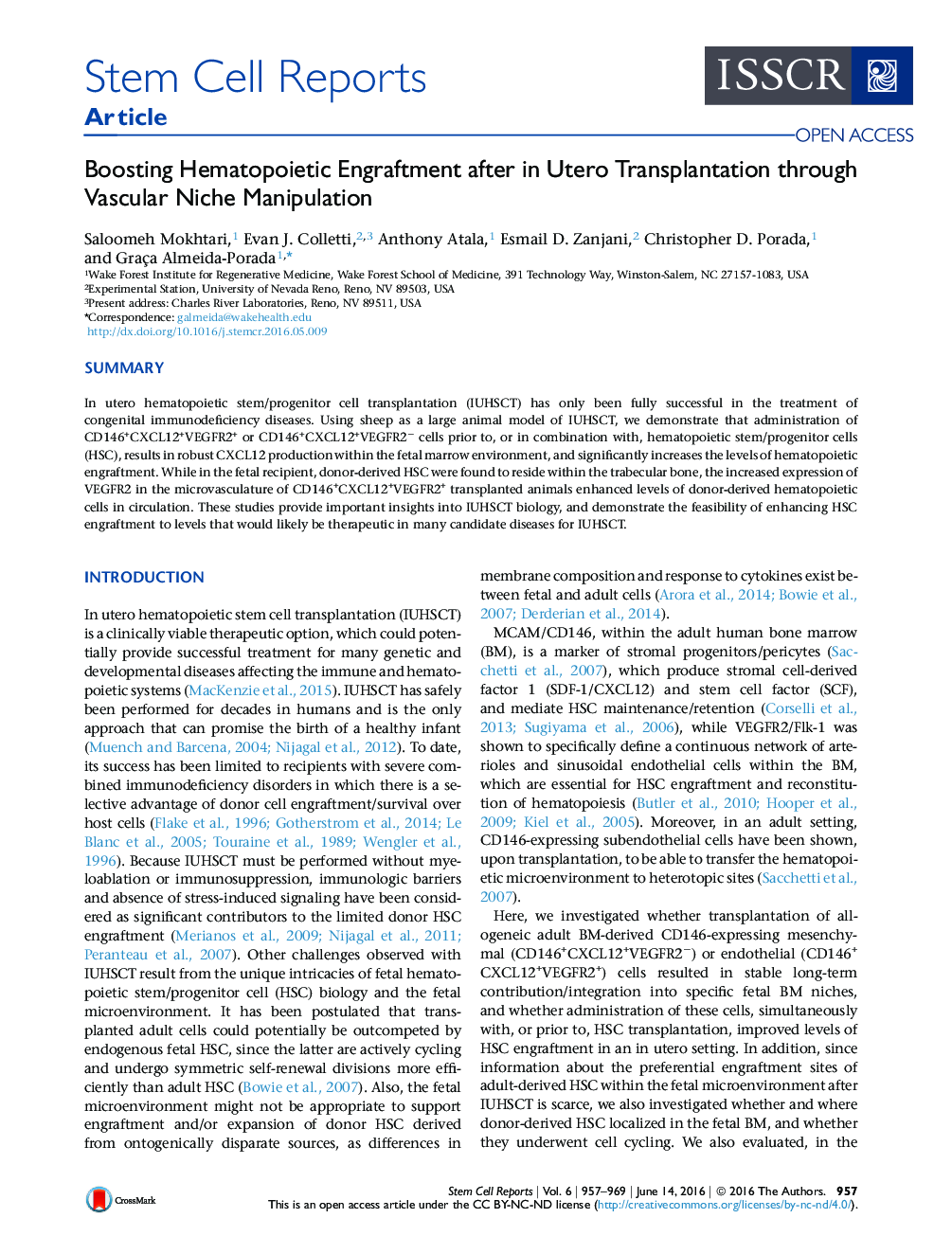| Article ID | Journal | Published Year | Pages | File Type |
|---|---|---|---|---|
| 2093267 | Stem Cell Reports | 2016 | 13 Pages |
•After IUHSCT, HSC engraft in the trabecular bone of the metaphysis•CD146++(+/−) cells engraft in diaphysis and make hematopoiesis-supporting cytokines•Donor cell-derived CXCL12 and VEGFR2 significantly increase HSC engraftment•IUHSCT of CD146+CXCL12+VEGFR2+ cells prior to HSC could be curative in several diseases
SummaryIn utero hematopoietic stem/progenitor cell transplantation (IUHSCT) has only been fully successful in the treatment of congenital immunodeficiency diseases. Using sheep as a large animal model of IUHSCT, we demonstrate that administration of CD146+CXCL12+VEGFR2+ or CD146+CXCL12+VEGFR2− cells prior to, or in combination with, hematopoietic stem/progenitor cells (HSC), results in robust CXCL12 production within the fetal marrow environment, and significantly increases the levels of hematopoietic engraftment. While in the fetal recipient, donor-derived HSC were found to reside within the trabecular bone, the increased expression of VEGFR2 in the microvasculature of CD146+CXCL12+VEGFR2+ transplanted animals enhanced levels of donor-derived hematopoietic cells in circulation. These studies provide important insights into IUHSCT biology, and demonstrate the feasibility of enhancing HSC engraftment to levels that would likely be therapeutic in many candidate diseases for IUHSCT.
Graphical AbstractFigure optionsDownload full-size imageDownload as PowerPoint slide
